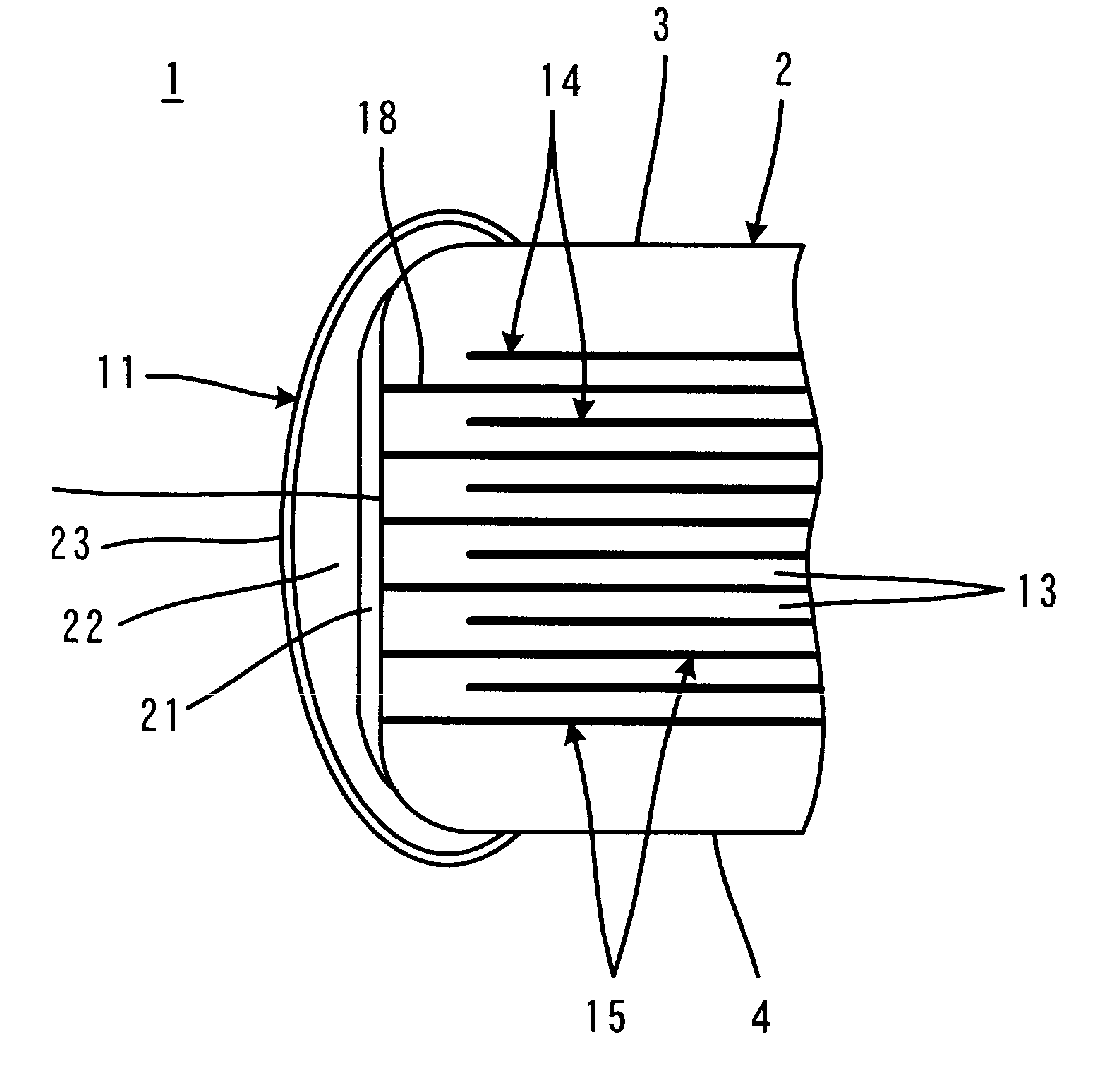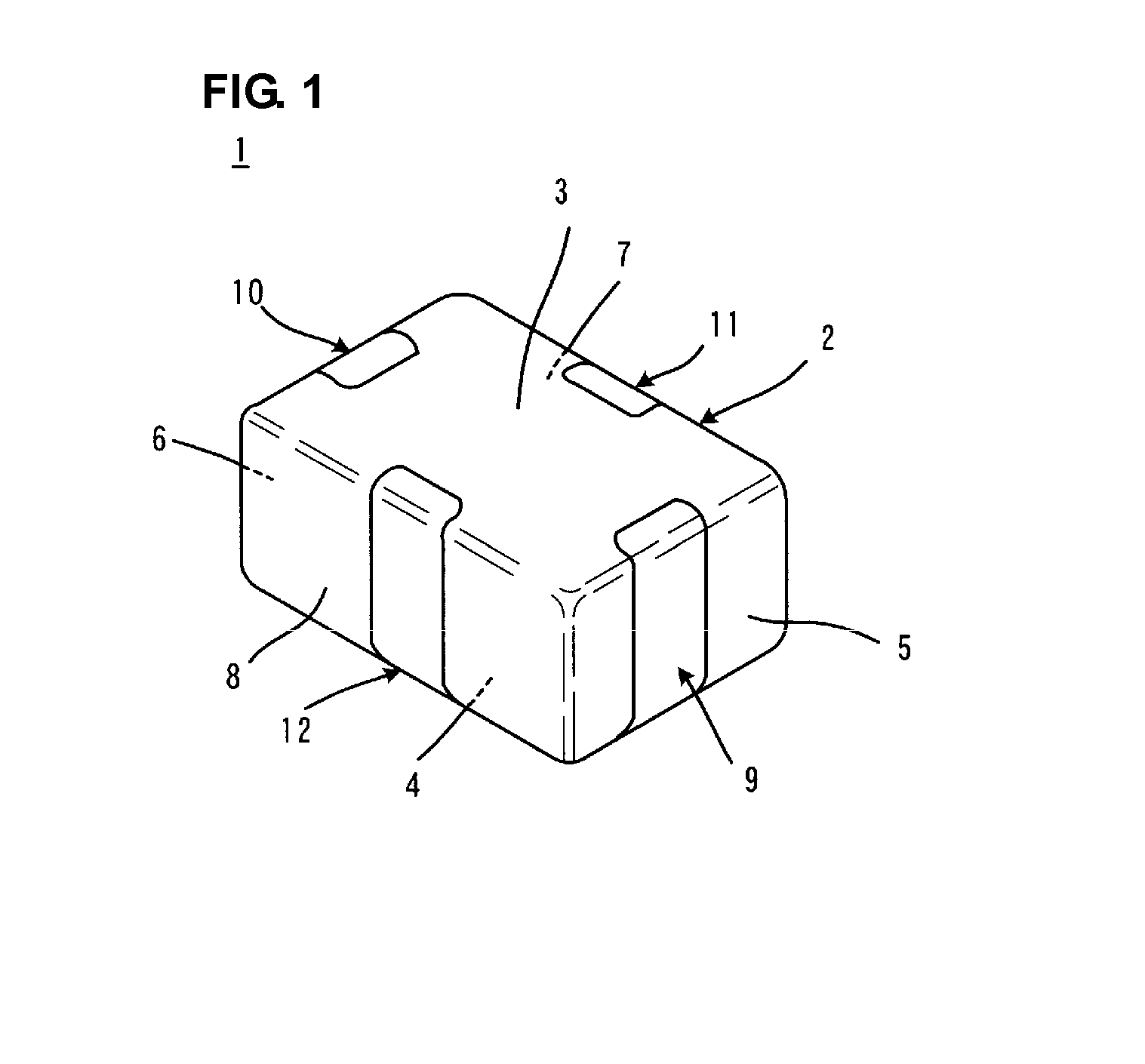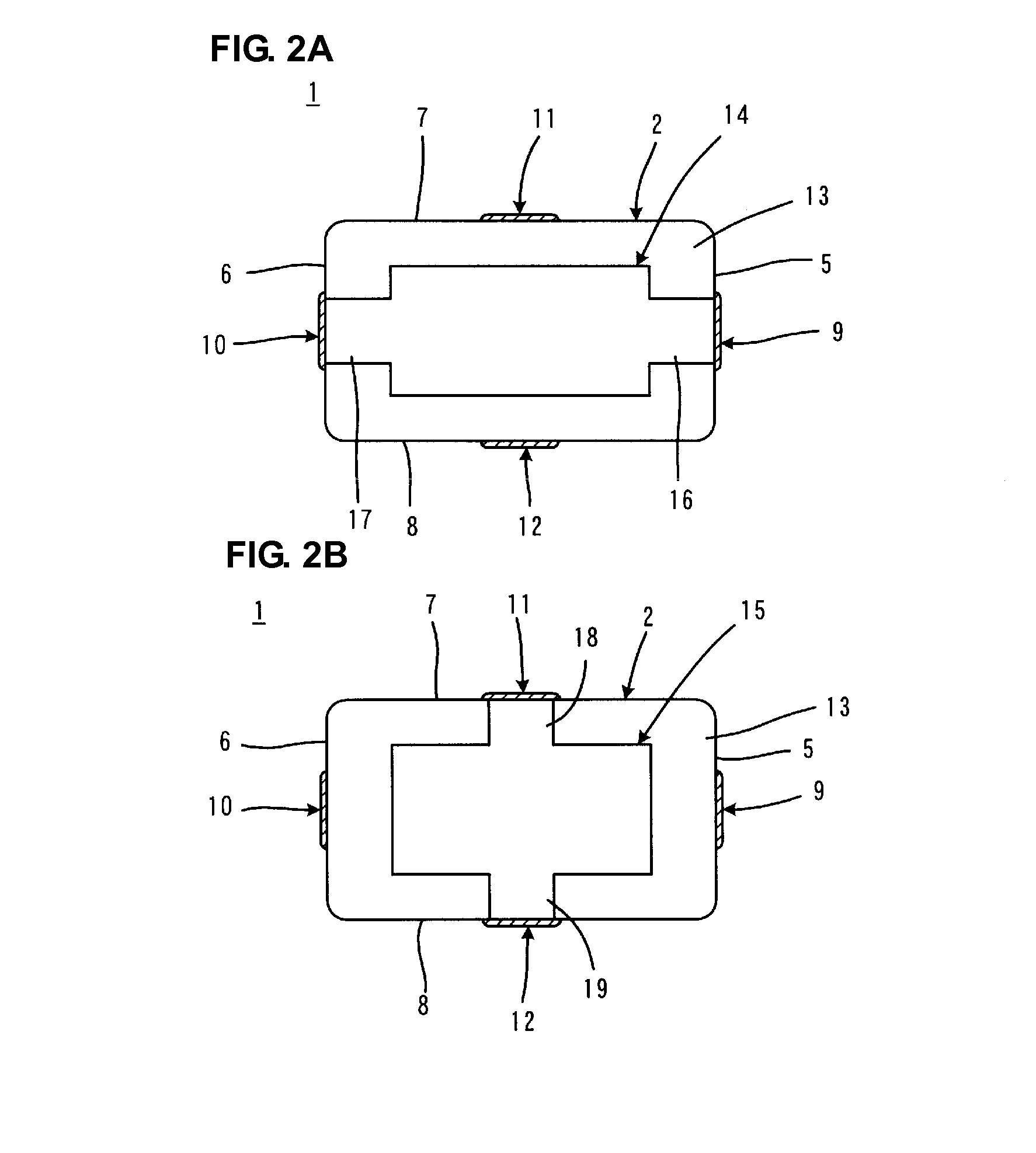Monolithic electronic component
a technology of electronic components and monolithic materials, applied in the direction of fixed capacitor details, semiconductor/solid-state device details, instruments, etc., can solve the problems of difficult to form a plating film with a uniform thickness, difficult to perform electroplating, and inability to easily flow electric current during electroplating, etc., to achieve the effect of stabilizing resistance and conductive resin films
- Summary
- Abstract
- Description
- Claims
- Application Information
AI Technical Summary
Benefits of technology
Problems solved by technology
Method used
Image
Examples
experimental example 1
[0084]In Experimental Example 1, the adhesion characteristic of a Ni plating film was evaluated by forming on a ceramic element an approximately 30-μm thick resistive foundation film having a specific resistance shown in Table 1 and performing Ni electroplating via barrel plating at a current Dk value of about 0.20 A / dm2 for approximately 60 minutes. The plating film entirely covering the resistive foundation film without exposing any portion of the resistive foundation film was determined to have good plating adhesion. Table 1 shows the number of samples determined to have poor plating adhesion out of a total of 100 samples.
TABLE 1SamplePoor plating adhesionnumberSpecific resistance [Ω· m][number of samples]15 × 10−413 / 100 23 × 10−49 / 10031 × 10−47 / 10047 × 10−50 / 10053 × 10−50 / 100
[0085]As seen in Table 1, poor plating adhesion occurred in Samples 1 to 3 where the specific resistance of the resistive foundation film was about 1×10−4 Ω·m or greater. Therefore, it is understood that the...
experimental example 2
[0086]In Experimental Example 2, Embodiment Example with conductive resin films and Comparative Example without a conductive resin film were compared in terms of plating film adhesion.
[0087]In both Embodiment Example and Comparative Example, the three-terminal CR composite component 1b having the structure shown in FIG. 6 and FIGS. 7A and 7B was used as samples. The dimensions of the component body 2 were approximately 2.0 mm×1.25 mm×0.85 mm. The first terminal electrodes 9 and 10 served as resistive terminal electrodes, on which a resistor film was formed with a specific resistance of about 5×10−3 Ω·m and a thickness of about 30 μm.
[0088]The three-terminal CR composite component 1b used in Embodiment Example had a conductive resin film having a specific resistance of 3×10−5 Ω·m formed on the resistor film.
[0089]The samples used in Embodiment Example and Comparative Example were subjected to Ni electroplating for approximately 70 minutes via barrel plating at current Dk values of ap...
experimental example 3
[0091]In Experimental Example 3, Embodiment Example with conductive resin films and Comparative Example without a conductive resin film were compared in terms of uniformity of plating film thickness.
[0092]In Experimental Example 3, the same samples as those in Experimental Example 2 were used as samples of Embodiment Example and Comparative Example, and electroplating was conducted under the same conditions as those in Experimental Example 2 except that the current Dk value was set to about 0.28 A / dm2 in Embodiment Example and except that the current Dk value was set to about 0.43 A / dm2 in Comparative Example. Then, a cross-section of the resultant Ni plating film was polished, and the thickness of the Ni plating film was measured with a digital microscope (1000× magnification) . In Comparative Example, where no Ni plating film was formed on some samples, the average thickness and standard deviation of the thickness of the Ni plating film were calculated for 18 samples on which a Ni...
PUM
| Property | Measurement | Unit |
|---|---|---|
| self-resonance frequency | aaaaa | aaaaa |
| pressure | aaaaa | aaaaa |
| temperature | aaaaa | aaaaa |
Abstract
Description
Claims
Application Information
 Login to View More
Login to View More - R&D
- Intellectual Property
- Life Sciences
- Materials
- Tech Scout
- Unparalleled Data Quality
- Higher Quality Content
- 60% Fewer Hallucinations
Browse by: Latest US Patents, China's latest patents, Technical Efficacy Thesaurus, Application Domain, Technology Topic, Popular Technical Reports.
© 2025 PatSnap. All rights reserved.Legal|Privacy policy|Modern Slavery Act Transparency Statement|Sitemap|About US| Contact US: help@patsnap.com



